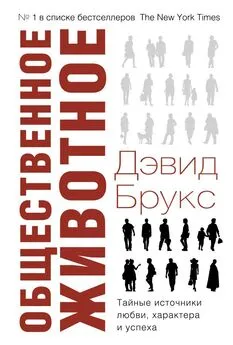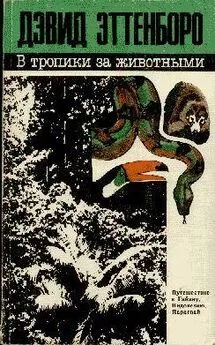Дэвид Брукс - Общественное животное. Тайные источники любви, характера и успеха
- Название:Общественное животное. Тайные источники любви, характера и успеха
- Автор:
- Жанр:
- Издательство:ACT
- Год:2013
- Город:Москва
- ISBN:978-5-17-080011-7
- Рейтинг:
- Избранное:Добавить в избранное
-
Отзывы:
-
Ваша оценка:
Дэвид Брукс - Общественное животное. Тайные источники любви, характера и успеха краткое содержание
Общественное животное. Тайные источники любви, характера и успеха - читать онлайн бесплатно полную версию (весь текст целиком)
Интервал:
Закладка:
Daniel Goleman, Social Intelligence: The New Science of Human Relationships (New York: Bantam Dell, 2006), 192.
335
P. Read Montague, Peter Dayan, and Terrence J. Sejnowski, «A Framework for Mesencephalic Domaine Systems Based on Predictive Hebbian Learning,» Journal of Neuroscience 16, no. 5 (March 1, 1996): 1936-47.
336
Read Montague, Your Brain Is (Almost) Perfect: How We Make Decisions (New York: Plume, 2007), 117.
337
Brett W. Pelham, Matthew C. Mirenberg, and John T. Jones, «Why Susie Sells Seashells by the Seashore: Implicit Egotism and Major Life Decisions,» Journal of Personality and Social Psychology 82, no. 4 (2002): 469-87.
338
Bruce E. Wexler, Brain and Culture: Neurobiology, Ideology, and Social Change (Cambridge, MA; MIT Press, 2006), 143.
339
James Q. Wilson, The Moral Sense (New York: Free Press, 1997), 124.
340
Bruce D. Perry, Born For Love: Why Empathy Is Essential — and Endangered (New York: HarperCollins, 2010), 51.
341
Elaine Hatfield, Richard L. Rapson, and Yen-Chi L. Le, «Emotional Contagion and Empathy,» in The Social Neuroscience of Empathy, eds. Jean Decety and William John Ickes (Cambridge, MA: MIT Press, 2009), 21.
342
Marco Iacoboni, Mirroring People: The New Science of How We Connect with Others (New York: Farrar, Straus & Giroux, 2008), 4.
343
Andrew Newburg and Mark Robert Waldman, Why We Believe What We Believe: Uncovering Our Biological Need for Meaning Spirituality, and Truth (New York: Free Press, 2006), 143—44.
344
Thomas Lewis, Fari Amini, and Richard Lannon, A General Theory of Love (New York: Vintage, 2001), 80.
345
Jonathan Haidt, The Happiness Hypothesis: Finding Modem Truth in Ancient Wisdom (New-York: Basic Books, 2006), 237.
346
Allan Bloom, Love and Friendship (New York: Simon & Schuster, 1993), 19.
347
Don Peck, «How a New Jobless Era Will Transform America,» The Atlantic, March 2010.
348
Robert H. Frank, The Economic Naturalist: In Search of Explanations for Everyday Enigmas (New York: Basic Books, 2007), 129.
349
Andrew Newburg and Mark Robert Waldman, Why We Believe What We Believe: Uncovering Our Biological Need for Meaning Spirituality, and Truth (New York: Free Press, 2006), 73.
350
Richard H. Thaler and Cass R. Sunstein, Nudge: Improving Decisions About Health, Wealth, and Happiness (Ann Arbor, MI: Caravan Books, 2008), 32.
351
Keith E. Stanovich, What Intelligence Tests Miss: The Psychology of Rational Thought (New Haven, CT: Yale University Press, 2009), 109.
352
Daniel Gilbert, Stumbling on Happiness (New York: Vintage, 2007), 18.
353
Joseph T. Hallinan, Why We Make Mistakes: How We Look Without Seeing, Forget Things in Seconds, and Are All Pretty Sure We Are Way Above Average (New York: Broadway Books, 2009), 170.
354
David G. Myers, Intuition: Its Powers and Perils (New Haven, CT: Yale University Press, 2004), 83.
355
Hallinan, 167.
356
Myers, 159.
357
Stephen J. Dubner, «This Is Your Brain on Prosperity,» New York Times, January 9, 2009.
358
Gilbert, 180.
359
Erica Goode, «Among the Inept, Researchers Discover, Ignorance Is Bliss,» New York Times, January 18, 2000.
360
Jerry Z. Muller, «Our Epistemological Depression,» The American, February 29, 2009.
361
John Maynard Keynes, The General Theory of Employment, Interest and Money (New York: Classic Books America, 2009), 331 (рус. изд. — Джон Мейнард Кейнс. Общая теория занятости, процента и денег. М.: Гелиос АРВ, 2012).
362
Guy Claxton, The Wayward Mind: An Intimate History of the Unconscious (New York: Little, Brown Book Group, 2006).
363
Lionel Trilling, The Liberal Imagination: Essays on Literature and Society (New York: New York Review of Books, 2008), IX-XX.
364
Robert Skidelsky, Keynes: The Return of the Master (New York: Public Affairs, 2009), 81.
365
Clive Cookson, Gillian Tett, and Chris Cook, «Organic Mechanics,» Financial Times, November 26, 2009.
366
George A. Akerlof and Robert J. Shiller, Animal Spirits: How Human Psychology Drives the Economy, and Why It Matters (Princeton, NJ: Princeton University Press, 2010), 1.
367
Jim Collins, «How the Mighty Fail: A Primer on the Warning Signs,» Businessweek, May 14, 2009.
368
Richard H. Thaler and Cass R. Sunstein, Nudge: Improving Decisions About Health, Wealth, and Happiness (Ann Arbor, MI: Caravan Books, 2008), 22.
369
James Le Fanu, Why Us?: How Science Rediscovered the Mystery of Ourselves (New York: Vintage, 2010), 213.
370
Robert А. Burton, On Being Certain: Believing You Are Right Even When You're Not (New York: St. Martin’s Press, 2008), 10.
371
Joseph T. Hallinan, Why We Make Mistakes: How We Look Without Seeing, Forget Things in Seconds, and Are All Pretty Sure We Are Way Above Average (New York: Broadway Books, 2009), 41.
372
Taylor W. Schmitz, Eve De Rosa, and Adam K. Anderson, «Opposing Influences of Affective State Valence on Visual Cortical Encoding,» Journal of Neuroscience 29, no. 22 (June 3, 2009): 7199-7207.
373
Hallinan, 219.
374
Norbert Schwarz and Gerald L. Clore, «Mood, Misattribution, and Judgments of Well-Being: Informative and Directive Functions of Affective States,» Journal of Personality and Social Psychology 45, no. 3 (1983): 513-23.
375
Timothy D. Wilson, Strangers to Ourselves: Discovering the Adaptive Unconscious (Cambridge, MA: Belknap Press, 2002), 101-102.
376
John Huizinga and Sandy Weil, «Hot Hand or Hot Head: The Truth About Heat Checks in the NBA» MIT Sloan Sports Analytics Conference, March 7, 2009.
377
Robert E. Christiaansen, James D. Sweeney, and Kathy Ochalck, «Influencing Eyewitness Descriptions,» Law and Human Behavior 7, no. 1 (March 1983), 59-65.
378
«Roots of Unconscious Prejudice Affect 90 to 95 percent of People,» Science-Daily, September 30, 1998.
379
Carey Goldberg, «Even Elders Reflect Broad Bias Against the Old, Study Finds,» Boston Globe, October 28, 2002.
380
David G. Myers, Intuition: Its Powers and Perils (New Haven, CT: Yale University Press, 2004), 205.
381
Ар Dijksterhuis, Henk Aarts, and Pamela К. Smith, «The Power of the Subliminal: On Subliminal Persuasion and Other Potential Applications,» in The New Unconscious, eds. Ran R. Hassim, James S. Uleman, and John A. Bargh (Oxford: Oxford University Press, 2005), 82.
382
Wilson, 19.
383
Jonah Lehrer, How We Decide (New York: Houghton Mifflin Co., 2009), 136.
384
Benedict Carey, «Blind, Yet Seeing: The Brain’s Subconscious Visual Sense,» New York Times, December 23, 2008.
385
Jonah Lehrer, Proust Was a Neuroscientist (New York: Houghton Mifflin Co., 2007), 184.
386
Myers, 55.
387
Wilson, 26-27.
388
Benedict Carey, «In Battle, Hunches Prove to Be Valuable,» New York Times, July 28, 2009.
389
Antoine Bechara, Hanna Damasio, Daniel Tranel, and Antonio R. Damasio, «Deciding Advantageously Before Knowing the Advantageous Strategy,» Science 28, no. 5304 (February 1997): 1293-95.
390
Wilson, 25.
391
Gerd Gigerenzer, Gut Feelings: The Intelligence of the Unconscious (New York: Penguin Books, 2007), 9-11.
392
Paul A. Klaczynski, «Cognitive and Social Cognitive Development: Dual-Process Research and Theory,» in In Two Minds: Dual Processes and Beyond, eds. Jonathan Evans and Keith Frankish (Oxford: Oxford University Press, 2009), 270.
393
Ар Dijksterhuis and Loran Е Nordgren, «А Theory of Unconscious Thought,» Perspectives on Psychological Science 1, no. 2 (June 2006): 95-109.
394
Dijksterhuis and Nordgren. 100.
395
Dijksterhuis and Nordgren, 104.
396
Dijksterhuis and Nordgren, 102.
397
John A. Bargh, «Bypassing the Will: Toward Demystifying the Non-conscious Control of Social Behavior,» in The New Unconscious, eds. Ran R. Hassim, James S. Uleman, and John A. Bargh (Oxford: Oxford University Press, 2005), 53.
398
James С. Scott, Seeing Like a State: How Certain Schemes to Improve the Human Condition Have Failed (New Haven, CT: Yale University Press, 1998), 311.
399
Guy Claxton, Hare Brain, Tortoise Mind: How Intelligence Increases When You Think Less (New York: Harper Perennial, 2000), 18.
400
Colin Camerer et al., «Neural Systems Responding to Degrees of Uncertainty in Human Decision-Making,» Science 310, no. 5754 (December 9, 2005): 1680-83.
401
David Rock, Your Brain at Work: Strategies for Overcoming Distraction, Regaining Focus, and Working Smarter All Day Long (New York: HarperCollins, 2009), 49.
402
Gerald Traufetter, «Have Scientists Discovered Intuition?», Der Spiegel, September 21, 2007.
403
Patrick Rabbitt, «Detection of Errors by Skilled Typists,» Ergonomics 21, no. 11 (November 1978): 945-58.
404
Joseph T. Hallinan, Why We Make Mistakes: How We Look Without Seeing Forget Things in Seconds, and Are All Pretty Sure We Are Way Above Average (New York: Broadway Books, 2009), 53.
405
Peter E. Drucker, The Essential Drucker: In One Volume the Best of Sixty Years of Peter Drucker's Essential Writings on Management (New York: HarperCollins, 2001), 127.
Читать дальшеИнтервал:
Закладка:










